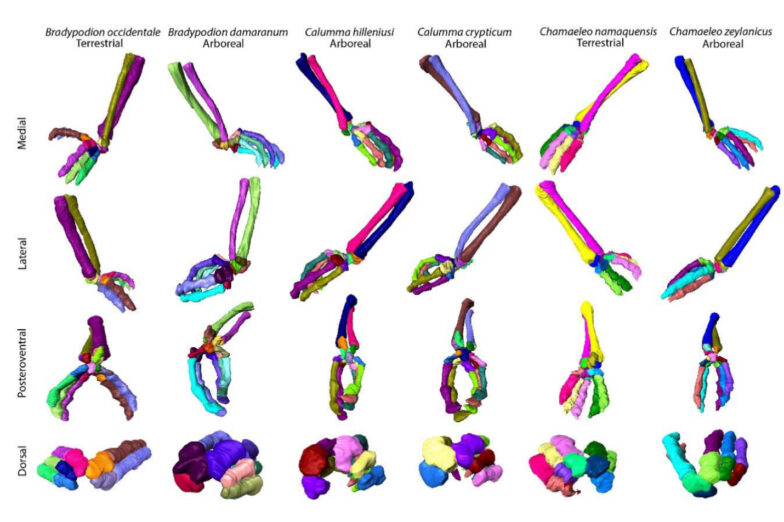The anatomy of chameleons seems to be strongly adapted to their way of life. Tree-dwellers differ in many aspects from ground-dwellers. Several studies at the University of South Dakota this year have already looked at various anatomical aspects of chameleons. A new study is dedicated to the hands and arms.
For the investigation, the arms and hands of a total of 12 chameleons were isolated from existing microcomputer tomography scans and displayed in 3D. These were measured to about 30 different lengths and widths using software. Scans of the species Bradypodion damaranum, Bradypodion occidentale, Calumma hilleniusi, Calumma crypticum, Chamaeleo namaquensis, Chamaeleo zeylanicus, Furcifer balteatus, Furcifer campani, Rhampholeon spinosus, Rhampholeon temporalis, Trioceros goetzei goetzei and Trioceros werneri were evaluated. When selecting the species, care was taken to select one strictly tree-inhabiting chameleon and one more ground-inhabiting chameleon per genus.
The evaluation revealed that tree-dwelling chameleons show few differences in forelimb anatomy compared to ground-dwelling chameleons. Tree-dwelling species showed a majority of separated metacarpal bones 1-3, while ground-dwelling species showed fused metacarpal bones. Interestingly, this study differs from earlier studies by other authors, which yielded different results. The relatively small number of animals studied may be related to this. Larger studies could be helpful here.
Ecological and evolutionary drivers of chameleon forelimb variation
Ellie M. Schley
Honors Thesis 302 der Universität von South Dakota, 2023
DOI: gibt es nicht


